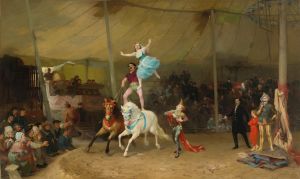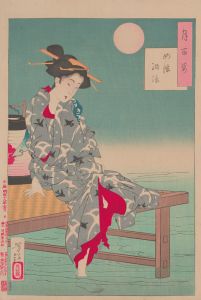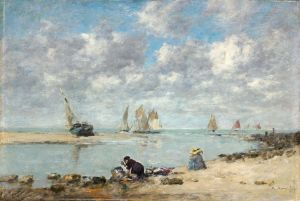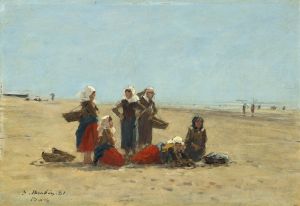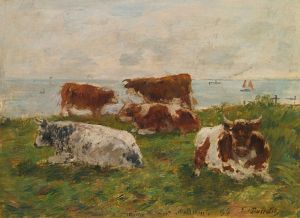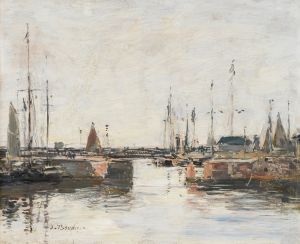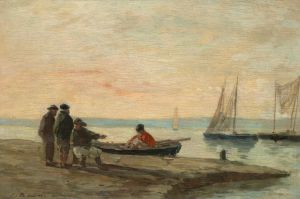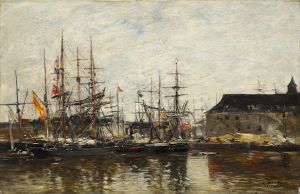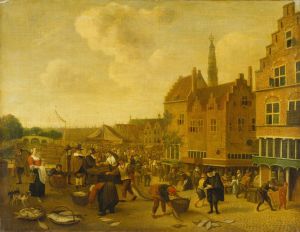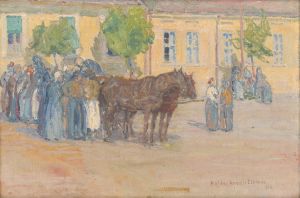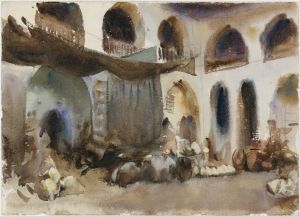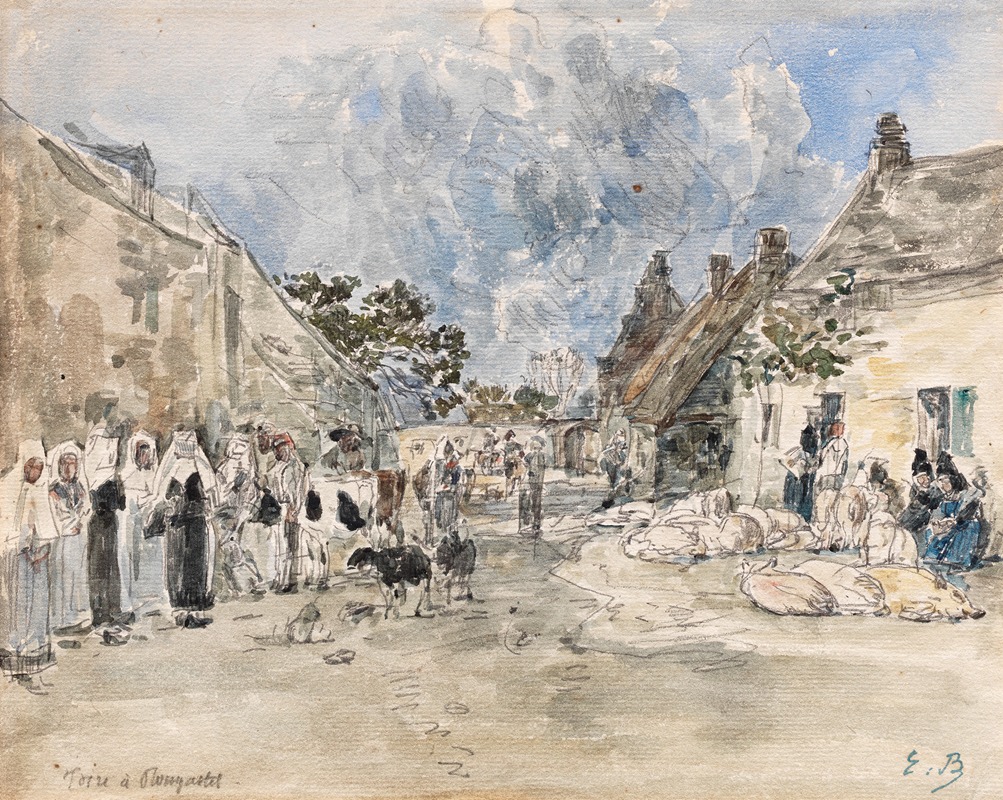
Foire à Plougastel
A hand-painted replica of Eugène Boudin’s masterpiece Foire à Plougastel, meticulously crafted by professional artists to capture the true essence of the original. Each piece is created with museum-quality canvas and rare mineral pigments, carefully painted by experienced artists with delicate brushstrokes and rich, layered colors to perfectly recreate the texture of the original artwork. Unlike machine-printed reproductions, this hand-painted version brings the painting to life, infused with the artist’s emotions and skill in every stroke. Whether for personal collection or home decoration, it instantly elevates the artistic atmosphere of any space.
Eugène Boudin, a prominent French painter born on July 12, 1824, in Honfleur, is celebrated for his significant contributions to the development of landscape painting and his influence on the Impressionist movement. Boudin is particularly renowned for his depictions of coastal scenes and his ability to capture the transient effects of light and atmosphere. One of his notable works is "Foire à Plougastel," which exemplifies his mastery in portraying the lively and vibrant scenes of everyday life.
"Foire à Plougastel" translates to "Fair at Plougastel," and it is a painting that captures the essence of a bustling fair in the town of Plougastel, located in Brittany, France. This region was a frequent subject in Boudin's work, as he was deeply inspired by its picturesque landscapes and the dynamic life of its inhabitants. The painting is characterized by Boudin's typical use of light and color, which brings the scene to life and immerses the viewer in the lively atmosphere of the fair.
Boudin's technique involved painting en plein air, or outdoors, which allowed him to observe and depict the natural light and its effects on the landscape and figures. This approach was innovative at the time and laid the groundwork for the Impressionist movement, which would later be popularized by artists such as Claude Monet, who was directly influenced by Boudin's work. In "Foire à Plougastel," Boudin's brushwork is loose and fluid, capturing the movement and energy of the crowd as they engage in various activities typical of a fair.
The composition of "Foire à Plougastel" is carefully arranged to guide the viewer's eye through the scene. Boudin often included a wide range of figures, from vendors and customers to children and animals, each contributing to the overall narrative of the painting. The use of color is particularly noteworthy; Boudin employed a palette that reflects the natural hues of the Brittany landscape, with its lush greens and vibrant blues, while also incorporating the bright and varied colors of the fair itself.
Boudin's ability to capture the fleeting moments of everyday life with such authenticity and vibrancy is a testament to his skill as an artist. His work not only provides a glimpse into the cultural and social aspects of 19th-century France but also demonstrates his pioneering role in the evolution of modern art. "Foire à Plougastel" is a prime example of how Boudin's innovative techniques and keen observation of nature influenced the trajectory of art history.
Today, Eugène Boudin is remembered as a key figure in the transition from traditional landscape painting to the more modern approaches that characterized the Impressionist movement. His works, including "Foire à Plougastel," continue to be celebrated for their beauty, technical skill, and historical significance. Boudin's legacy is evident in the continued appreciation and study of his paintings, which remain an integral part of art collections and exhibitions around the world.





